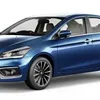Here are the best small cars launched in the last decade in India
Small cars rule the Indian automotive market, and the last decade has further added weight to the statement with several new iconic hatchbacks.
We are at the end of a decade, which saw us move from BS-II to BS-IV emission norms. Today, we are at the cusp of BS-VI emission norms, a major technical innovation, especially when jumping over a generation worth of technology.
The past 10 years have seen the Indian automotive sector grow, especially in hatchbacks, from the relics of Maruti 800 to the rise of Alto, and the emergence of Hyundai Grand i10.
Here are five small cars that stood out in the last decade.
Maruti Alto K10

How can any small car list in India not start with a Maruti? The company was an Indian entity that was set up to import Suzuki cars to India in 1981. In 1982, a joint venture agreement was signed, which lead to the creation of Maruti Suzuki.
This is where the story of Maruti and India’s beloved small car started with the original Maruti 800.
The carmaker first introduced the Alto to India in 2000 with its fifth-generation model (global) and in 2006, it became India’s largest selling car.
The K10 is based on this original Alto, but instead of the 796cc engine, the car is powered by a four-cylinder 998cc engine, which delivers 67 PS of power. The Alto K10 came with a refreshed front-end, with more sculpted headlights and a slightly longer body than the earlier car.
Ford Figo

The car was based on Ford’s global Mark 5 Fiesta platform and was available in both petrol and diesel variants. The petrol was a 1.2-litre engine while the diesel was a 1.4-litre unit.
With competitive pricing between Rs 3.5 lakh and Rs 4.5 lakh, the car did well with over 25,000 bookings in the first four months after its launch.
Figo changed the way Indians looked at cars – it was finally a car Indians could have fun with and not just a utility vehicle. It also won the Indian Car of the Year (ICOTY) in 2011. Unfortunately, Ford has decided not to continue production of the car into the BS-VI era.
Grand i10

In September 2013, Hyundai decided to shake up the Indian market with a new car – the Grand i10 – which would be sold together with the base i10 model in India. It took on Maruti’s best-selling Swift, giving it a run for its money. Grand i10 even won the ICOTY award in 2014, a major achievement for Hyundai. In fact, the company went on to win the award for the next two years.
Since 2014, Hyundai has won five of the seven ICOTY awards for various models to date. The i10 Grand came with three engine options in India. The 1.1-litre three-cylinder CRDi diesel engine, the 1.2-litre four-cylinder petrol engine, and the 1.0-litre three-cylinder LPG engine. This car offered a host of features like dual-toned interiors, keyless entry, push on/off button, 1 GB internal memory for audio, and auto-folding outside rear-view mirrors.
These features helped democratise many of the features we see in cars today. This car also served as the base for the Hyundai’s sub-four metre sedan, the Xcent. The Grand i10 has since been upgraded and we now have the Grand i10 Nios, which is a more upmarket version of the Grand i10.
Similarly, we now have the Aura, which is the premium version of the Xcent. However, the company will continue to sell the earlier cars beside their premium cousins. This decision by Hyundai is underlying the success of the series in India.
Renault Kwid

This entry-level crossover changed the definition of a small car in India. Renault had a brainwave and brought together India’s love for SUV’s and the need for small cars due to budget and road constraints to make something no one had ever seen.
At the 2014 New Delhi Auto Show, the Renault stall had a concept car that looked like a full-blown SUV had a baby with a sports car, ending up with the proportions of the SUV and the scissor doors of a sports car with oversized wheels.
The Kwid was finally launched in September 2015 at a starting price of Rs 2.57 lakh. The car was an immediate success as Indians could finally buy a small car that looks like an SUV for daily use. The car was launched with a single three-cylinder, 800cc unit with a 54 PS power output and 72 Nm of torque, coupled to a five-speed manual transmission, which gave the car a decent power for city running.
The main selling point has been the look of the car and not the power output or even the high fuel efficiency.
Maruti Baleno

We started this article with a Maruti and we shall end with the same manufacturer. The Baleno is not the same Sedan, which was sold in India from 1999 to 2007. This time, it is a hatchback and quickly became one of India’s best-selling cars.
The Baleno was unveiled at the Frankfurt Motor Show in September 2015 and was launched in India on October 24, 2015, four months ahead of the launch in Suzuki’s home country, Japan.
The car is sold through Maruti’s premium Nexa outlets that sell only premium Maruti cars. It is sold with three engine options, a 1.2-litre K-series petrol engine, which developed 84 PS and 114 Nm of torque.
A 1.3-litre four-cylinder DDiS 190 diesel engine, which developed 75 PS of power and 190 Nm of torque and the 1.0-litre BoosterJet engine, which makes 111 PS of power and 170 Nm of torque.
Now, the Baleno is also sold by Toyota as the Toyota Glanza after Maruti’s partnership with Toyota to sell rebranded cars. This is further proof of how well the Indian market received the Baleno.
The 2020s will be a very important decade for the automobile industry, as it sits at the cusp of a revolution. We may see the rise of affordable, small electric cars on Indian streets. Besides that, the market may be further enriched by small crossover style cars.
(Edited by Saheli Sen Gupta)









